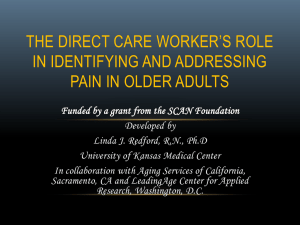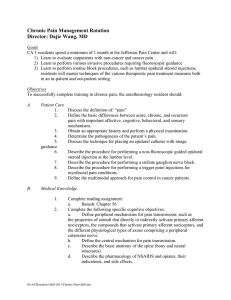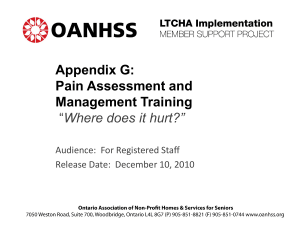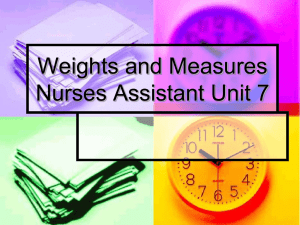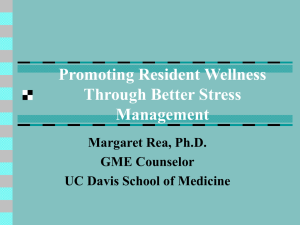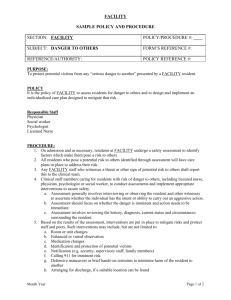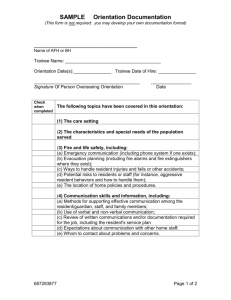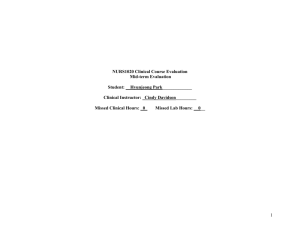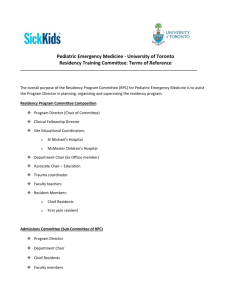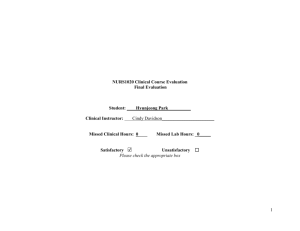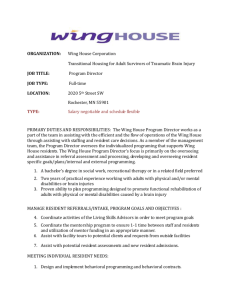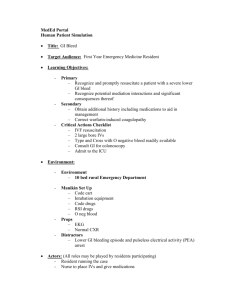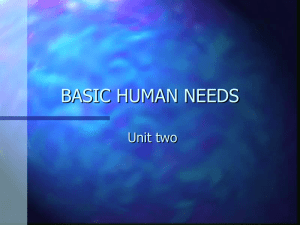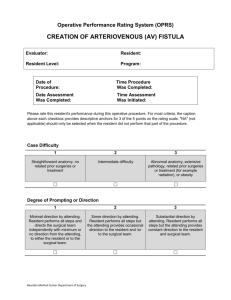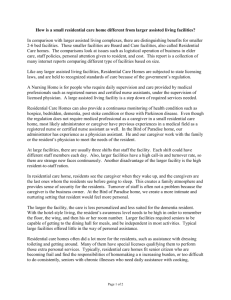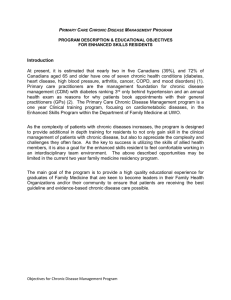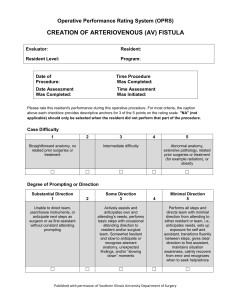Appendix H: Pain Management Program Training Presentation
advertisement
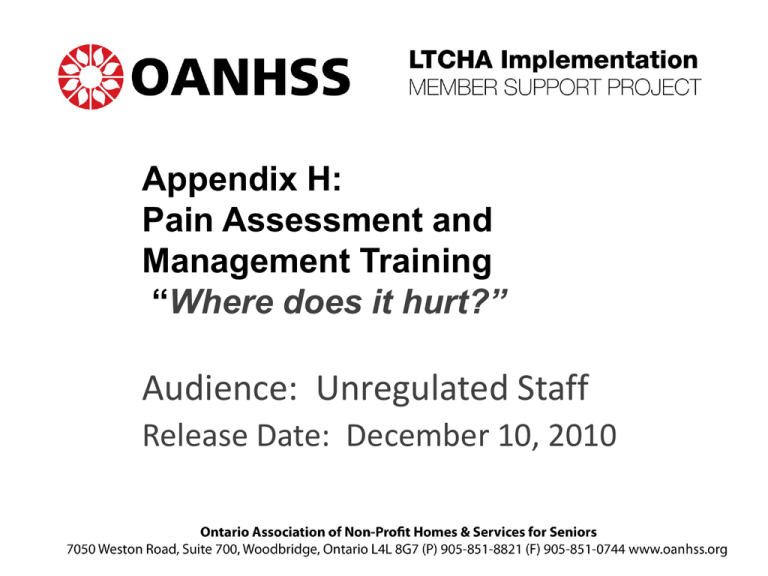
Appendix H: Pain Assessment and Management Training “Where does it hurt?” Audience: Unregulated Staff Release Date: December 10, 2010 Objectives • To improve and maintain a resident’s optimal functional level and quality of life • To optimally control pain for all residents • To reduce incidence of unmanaged pain • To ensure best practice interventions for residents with pain • To monitor and track trends related to pain management 2 Myths About Pain and the Elderly • Pain is a normal part of aging • The elderly perceive pain to a lesser degree or sensitivity than young people • If an elderly person does not complain then they are not in pain • Elderly patients should receive lower morphine doses than younger patients 3 Research Says • Approximately 25% of Canadian's suffer from chronic pain • Chronic pain becomes more common as people get older • 50% of Canadian’s take analgesic for chronic pain • 45-80% of nursing home residents have substantial pain • 25-26% of residents with daily pain receive no analgesia 4 Definition of Pain “Pain is what the patient say it is, and exists whenever the patients says it does” McCaffery & Pasero (1979) Pain An unpleasant subjective sensory and emotional experience that is associated with actual or potential tissue damage, or described in terms of such damage. RAI-MDS Definition: Pain that is reported is unrelieved pain. If the resident does not have any pain due to pain management, then it is coded as “0” for no pain. 5 Words Used to Describe Pain Can You Think of Any ? Discomfort Hurt Soreness Burning Pressure 6 Types of Pain 1) Acute Pain: sudden onset, lasts less than 3 months or usual time of healing. Can range from mild to severe. Decreases with time. 2) Chronic Pain: persist after healing occurs. Pain can be disabling and accompanied with depression and anxiety. 7 Types of Pain…cont`d 3) Neuropathic Pain: Pain that is initiated or caused by a primary lesion or dysfunction in the nervous system (Central Nervous System & Peripheral Nervous System)-stimuli abnormally processed by the nervous system. Neuropathic pain is usually described as sharp, burning, or shooting and is often associated with other symptoms such as numbness or tingling in the affected area. 8 Neuropathic Pain Described… 9 Your Role in Managing Pain During routine care, ask the resident about the presence of pain, ache or discomfort. Be aware of and observe behaviours that can indicate discomfort/pain: Facial Expression (frowning, tightly closed eyes, grimacing) Body Language and Movement ( fidgeting, rocking, rigid posture) Behaviour ( sleeplessness, decreased appetite, mood swings, wanting to sleep all day) 10 Your Role in Managing Pain …cont`d • Report resident verbalizations and behaviours indicative of discomfort/pain • Follow the care plan interventions for managing pain • Share with team members the interventions that are most effective for the resident • Record the presence of pain on the resident flow sheet 11 Pharmacological & NonPharmacological Approaches Pharmacological - Physician and Pharmacist 12 Non-Pharmacological Approach to Managing Pain • Exercise • Transcutaneous electrical nerve stimulation (TENs) • Heat/Cold • Relaxation Therapy • Massage • Acupuncture • Behaviour Therapy 13 Exercise Exercise improves your mood Exercise combats chronic diseases Exercise promotes better sleep Exercise boosts your energy level 14 Transcutaneous Electrical Nerve Stimulation (Acronym TENS) is the use of electric current produced by a device to stimulate the nerves for therapeutic purposes. TENS by definition covers the complete range of transcutaneously applied currents used for nerve excitation, although the term is often used with a more restrictive intent, namely to describe the kind of pulses produced by portable stimulators used to treat pain. 15 Thermal Treatment 16 Relaxation Therapy Distraction and Imagery: Redirection on something and away from pain. Structure technique that uses the resident’s own imagination to develop sensory images that divert focus away from the pain sensation and emphasize other experiences and pleasant memories. Relaxation: Aim is to free resident’s anxiety and muscle tension. Requires a quiet environment (guided breathing, meditation). 17 WORKING TOGETHER TO EASE THE PAIN 18

